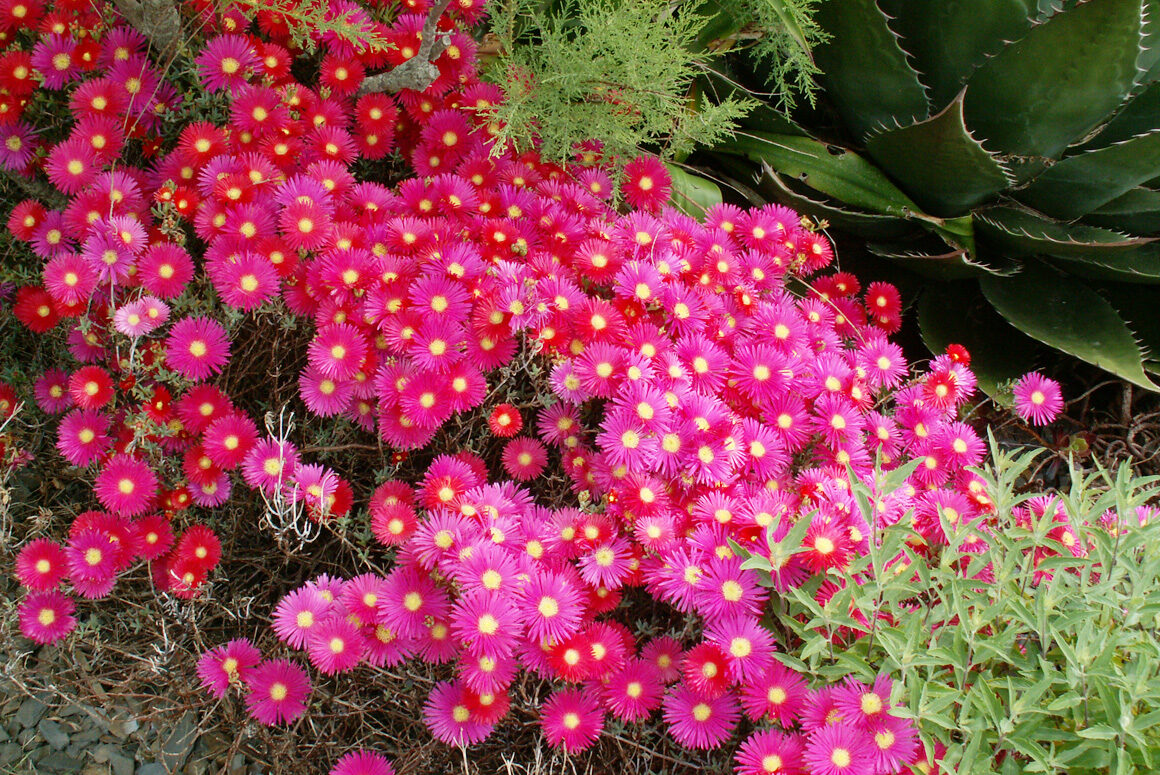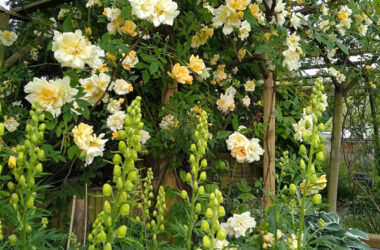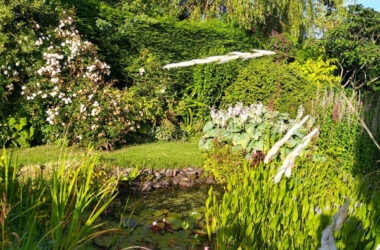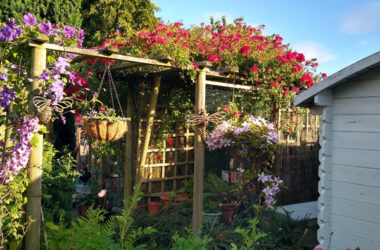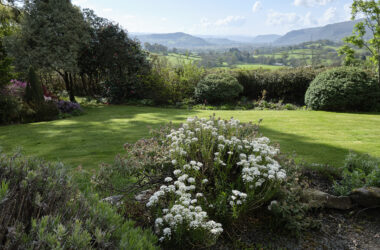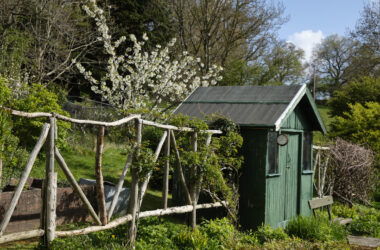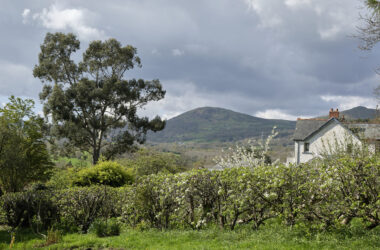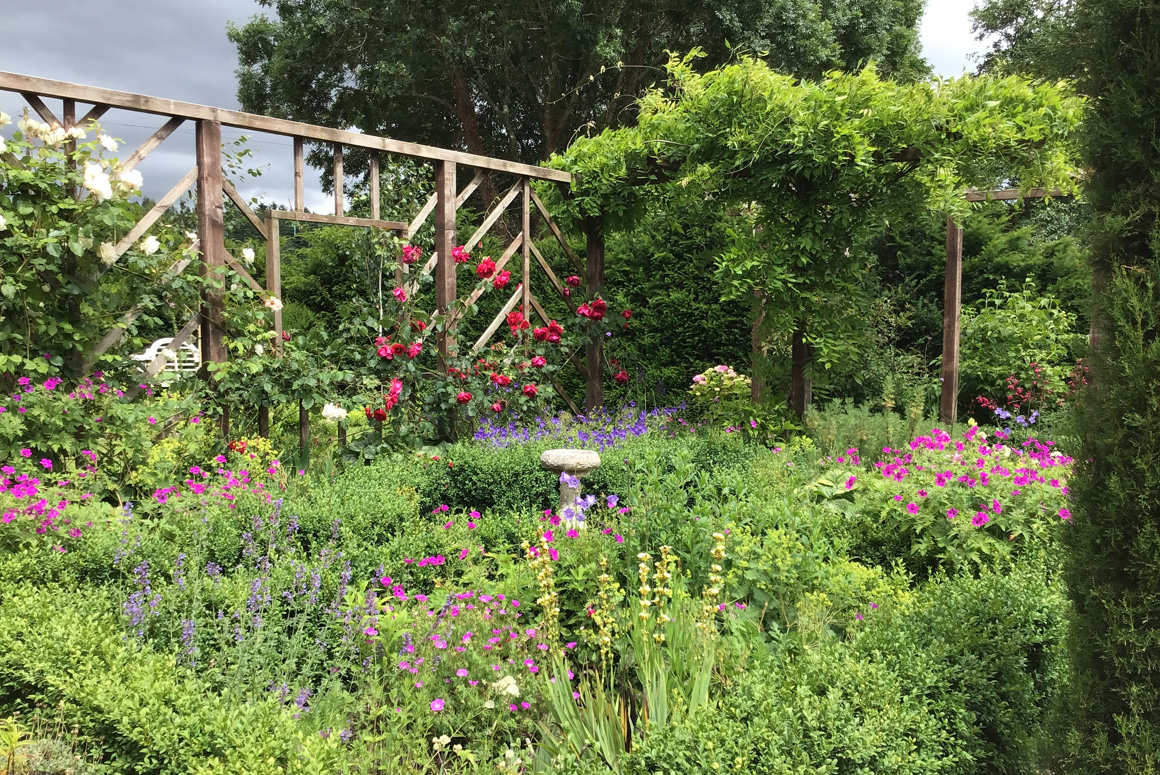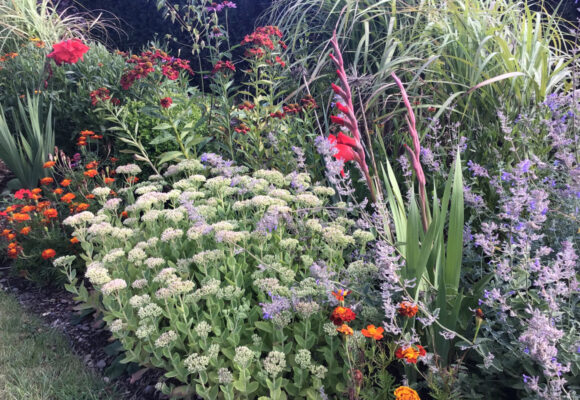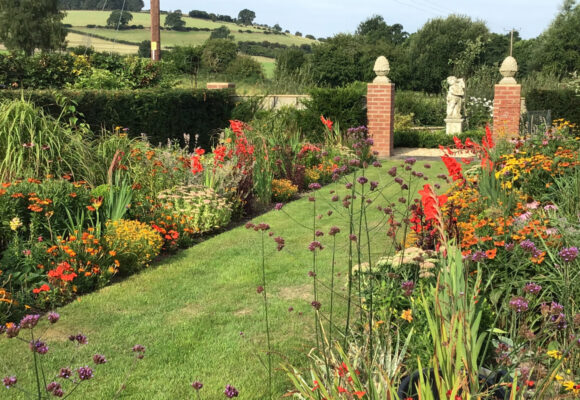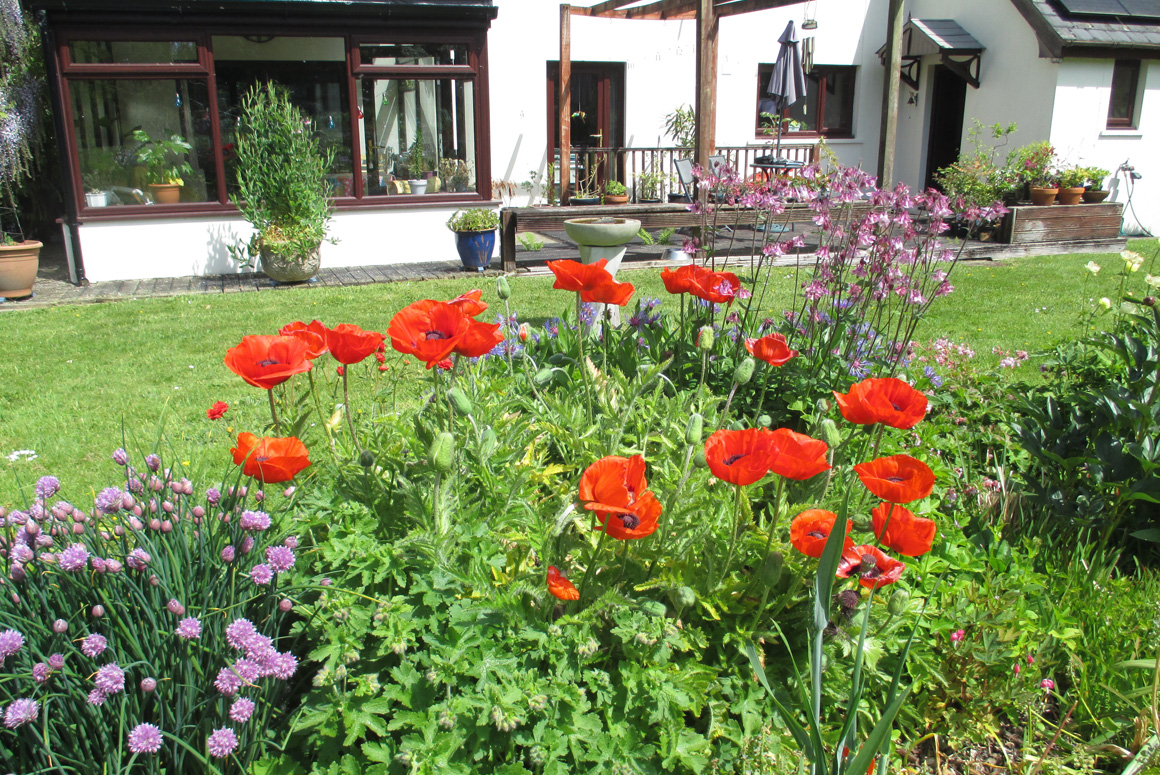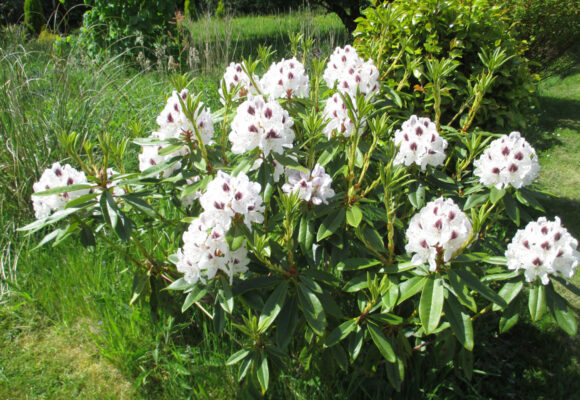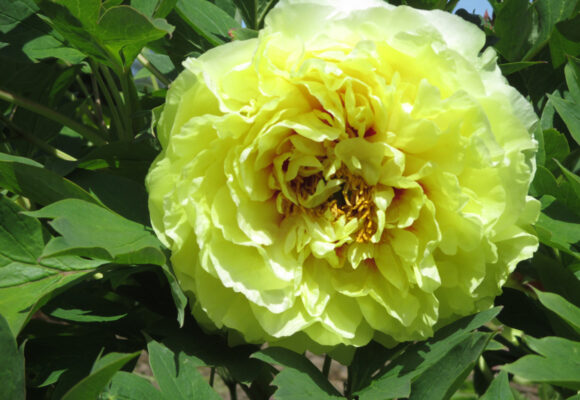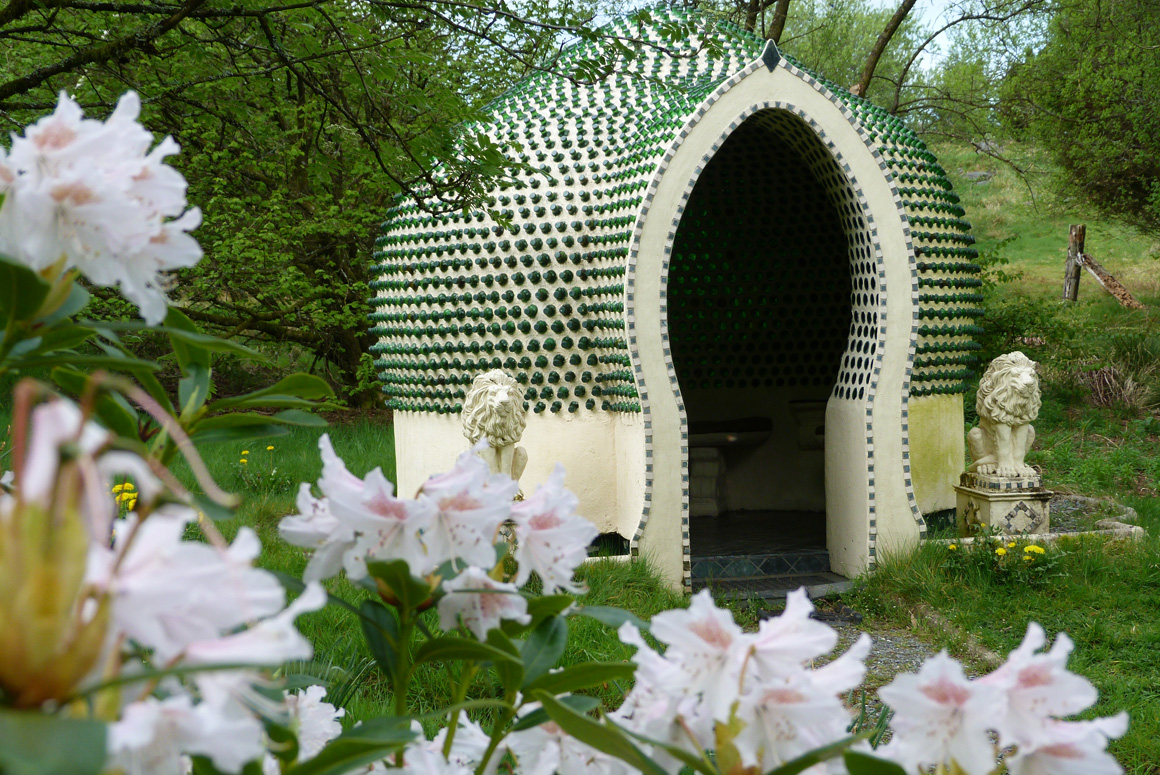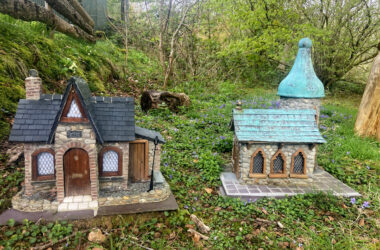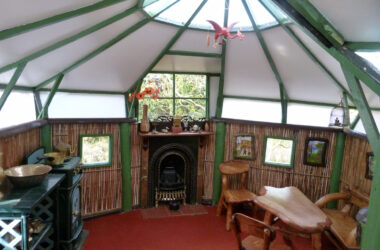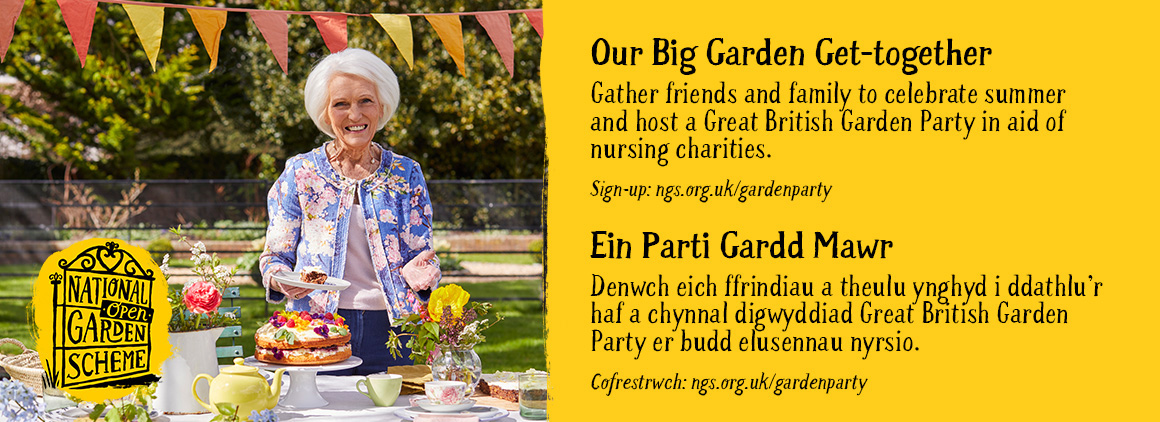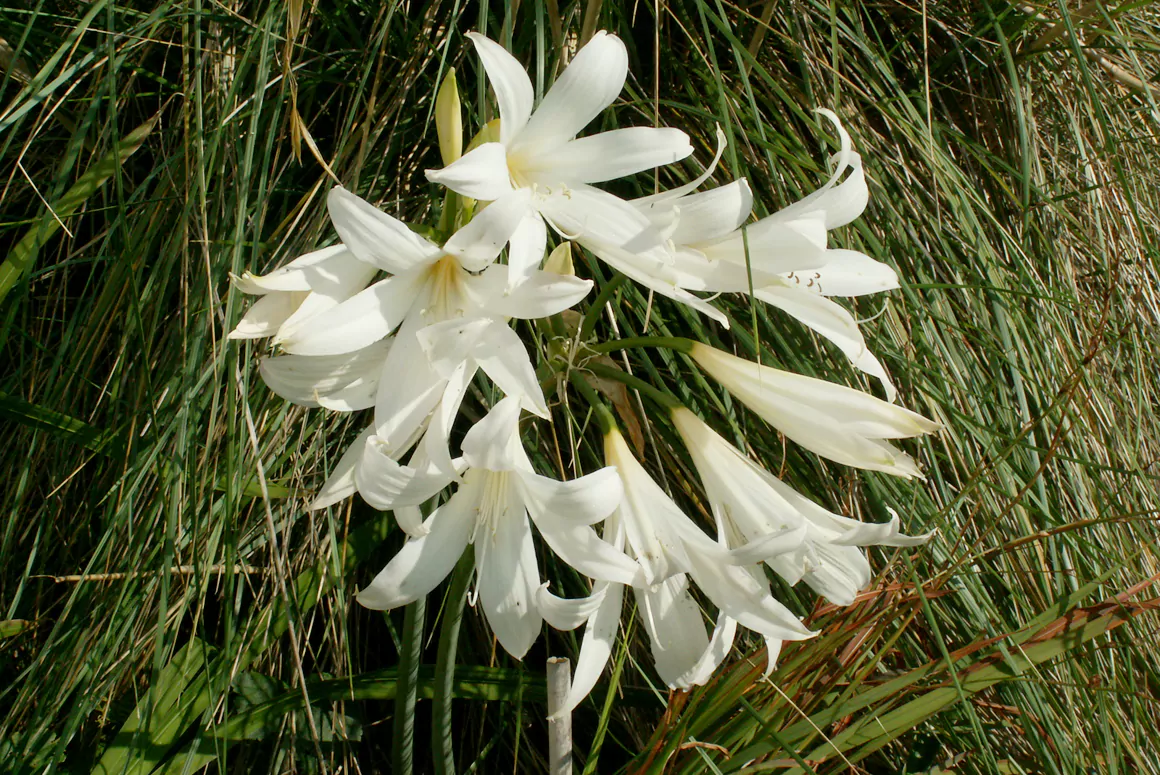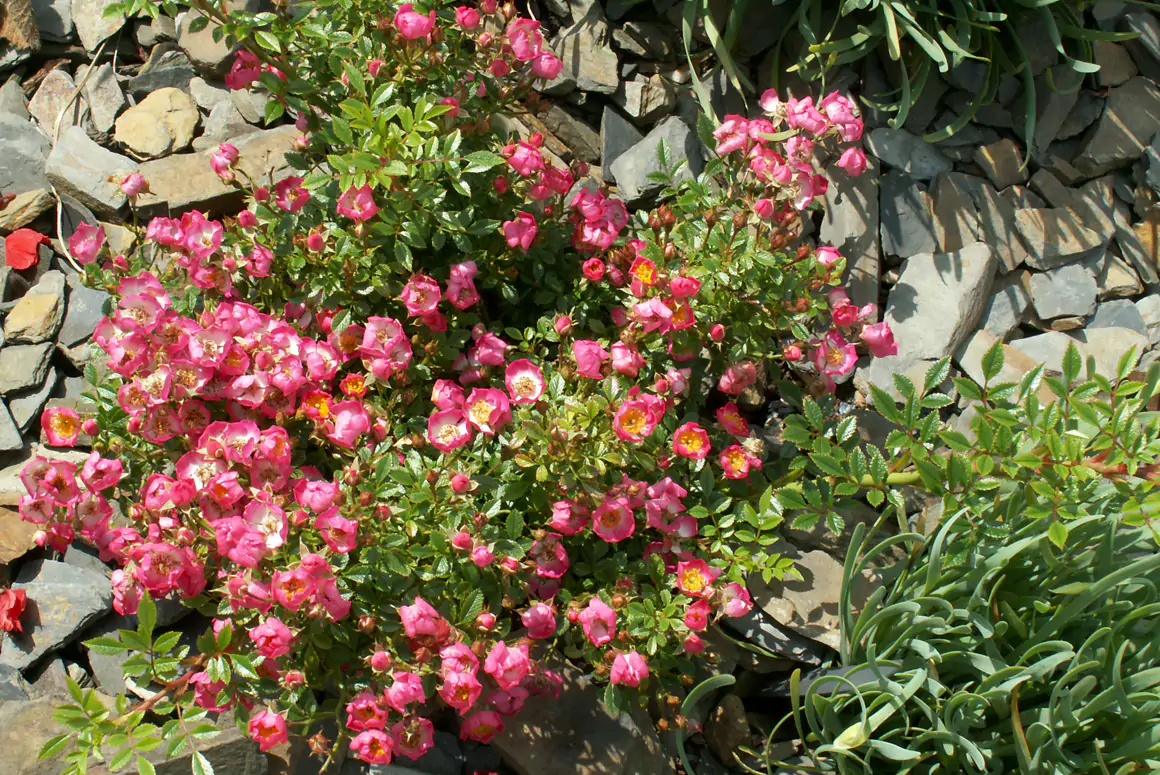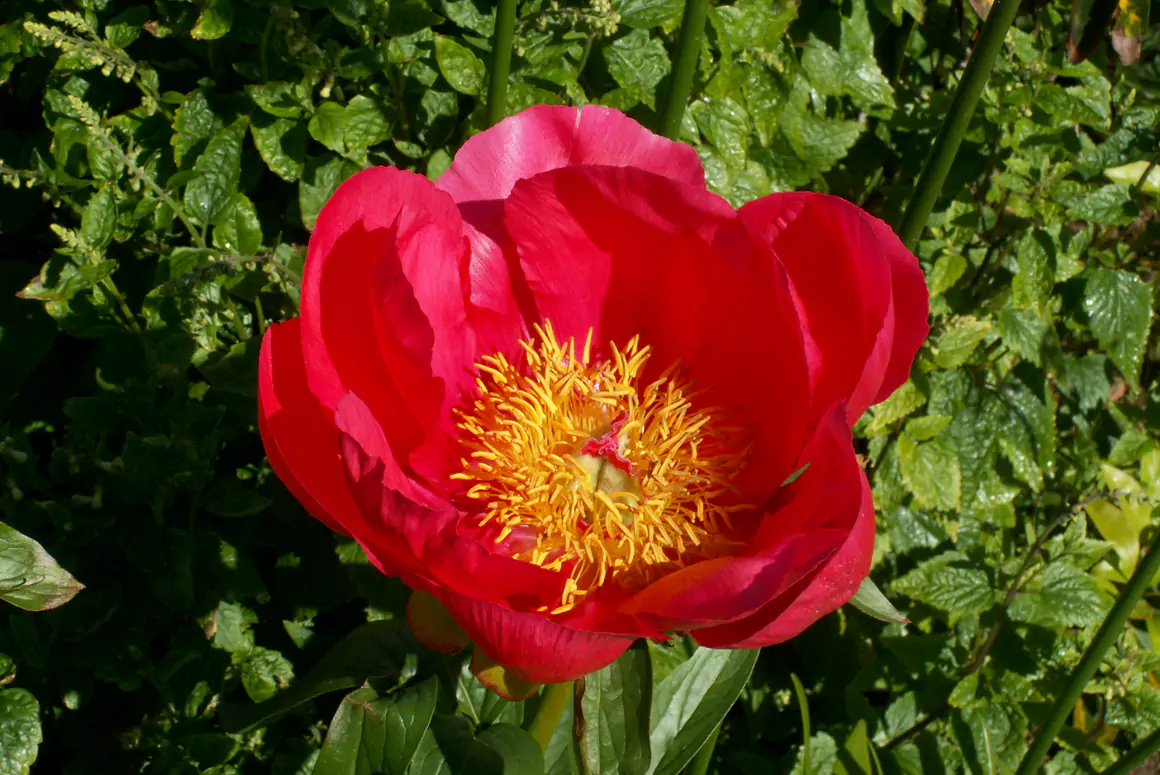![]()
I love to rise in a summer morn,
When the birds sing on every tree;
The distant huntsman winds his horn,
And the skylark sings with me.
William Blake (1757-1827)
The soft green leaves of spring have given way to darker, tougher mature foliage better able to withstand the vagaries of a British summer, which is already displaying the anticipated effects of Climate Change. At the time of writing we are entering our fifth week without rain, save for a thundery deluge, which dissipated to a trickle, as quickly as it fell. With the outlook showing little sign of a change it is a good time to think of plants which flourish in our present apocalyptic conditions.
Lampranthus (featured image) are a genus of creeping succulent perennials from southern Africa which thrive in well drained poor soils in full sun and can deliver a display so vivid that foliage is almost invisible. They are incredibly easy to propagate, any small shoot placed in a well drained compost at nearly any time of year will quickly root. Alternatively you can purchase a seed mix which will produce an assortment of colours. This ease of reproduction is important because, unless you are blessed with a mild climate like myself, they are not reliably hardy. However, cuttings taken in Autumn easily survive in a cold greenhouse, kept largely dry. Species can be sought on line but the genus has been so well hybridised with such a large choice of colours, that I personally would not bother. The ‘Tresco’ series of hybrids, presumably raised in the Isles of Scilly, are to be strongly recommended for the intensity of their colours. They are now frequently available in garden centres but nearly always in the ‘alpine’ section!
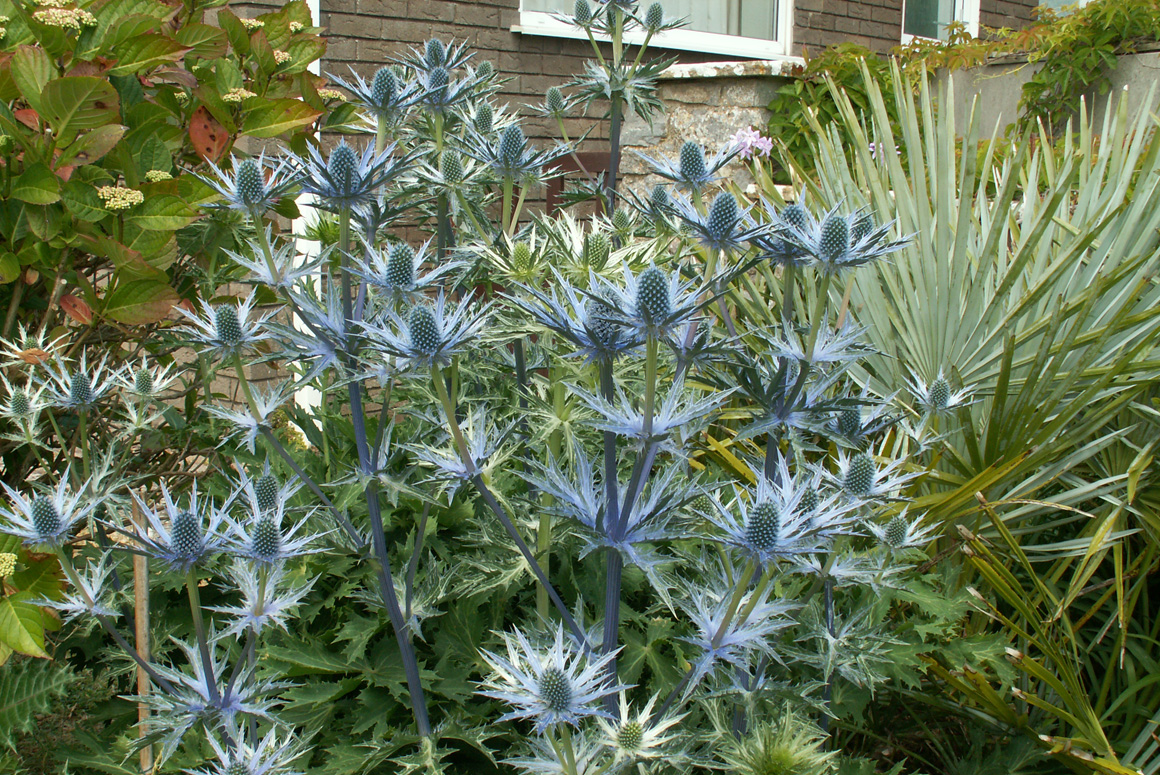
Sea hollies, correctly called Eryngiums, are annual and perennial herbs with a wide distribution, which in the U.K. includes E. maritimum. They are dramatic and statuesque plants with longlasting colourful flowers surrounded by ornate bracts, and hence in great demand by flower arrangers. My choice is Eryngium x zabelii ‘Big Blue’ which provides a feature in my sunny front garden, where it makes a talking point for passers-by, impressed by the intensity of its metallic blue stems and flowers. Although they are renowned for their performance in dry poor soil conditions, in my experience they are happy in any soil which is well drained in winter. A lot of the species are readily raised by seed but hybrids like ‘Big Blue’ must be propagated by root cuttings. Many species and hybrids are available from good garden centres and nurseries but specialties will need to be sought on line.
The dry and sunny weather has ensured a plethora of great gardens opening under the National Garden Scheme.
Mione, Abergavenny
Mione near Abergavenny, although not large will repay a visit. It has shady areas and raised beds containing ferns, woodland plants and semi-tender specials. A pond provides much wildlife interest and watching dragonflies emerge can occupy hours! The varied seating areas offer different perspectives for those who wish linger a little longer. All plants are arranged according to leaf shape and moved if the composition is not pleasing. The tranquil feel of the garden is further enhanced by beautiful views of The Skirrid.
Gilfach, Conwy
In the north lies Gilfach, a 1 acre garden on a south facing slope with magnificent views of the River Conwy and the Carneddau range of mountains. It is set within 35 acres of farm and woodland and features a herbaceous border, small pool and a collection of mature shrubs which increase yearly. It has been opening for the NGS since the 1950’s.
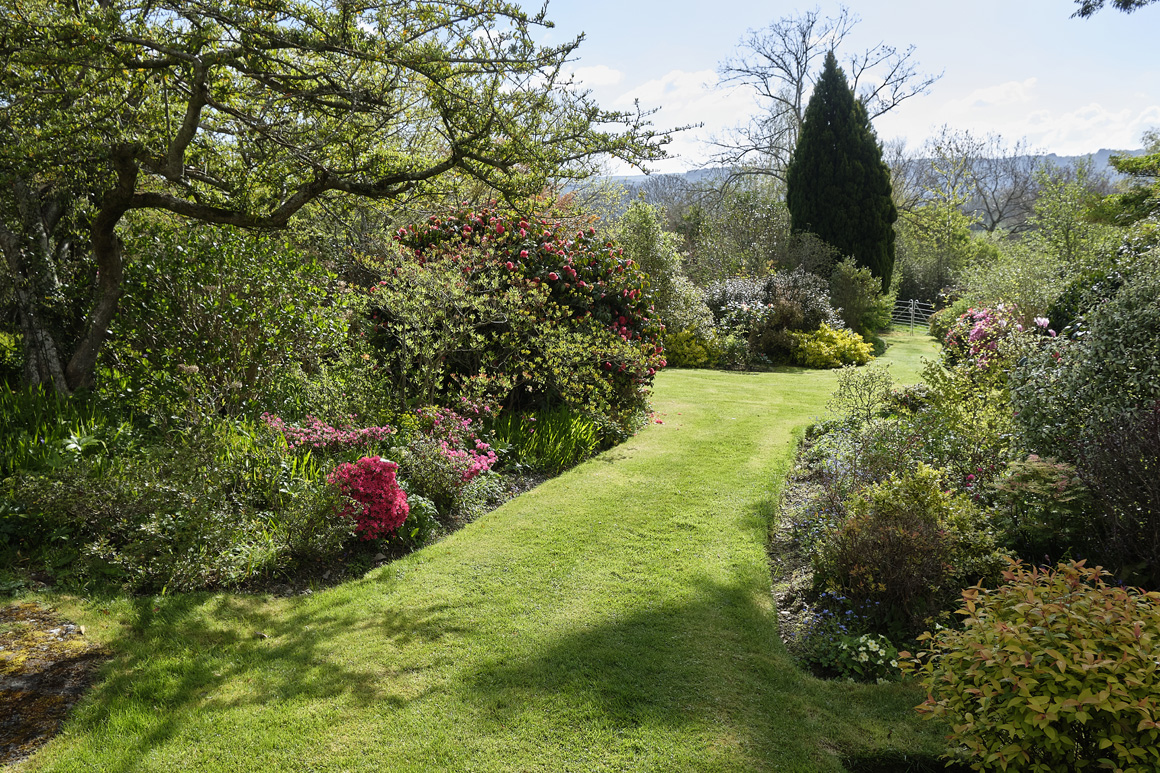
Willowbrook, Powys
Willowbrook in Powys is a garden designed and created from a blank canvas over the last 10 years, largely by trial and error. The south facing plot is divided into individual rooms by yew and beech hedging. The hot summer borders with summerhouse have views onto the surrounding countryside. Trees line a large formal pond with further attractions including a cottage garden, rose border, rill, box parterre and a planned secret sunken garden, once the hedges have grown! For productive gardeners added interest features in the kitchen and fruit garden.
Cae Bach, Pembrokeshire
In the west near Crymych Cae Bach is a 1½ acre newly established garden designed to attract wildlife, and includes herbaceous borders, ponds with fish and aquatic plants, grasses, a Japanese garden with acers and rill, rose garden and exotic area. Other areas contain numerous shrubs, hostas, a new wildflower meadow and a fruit, vegetable and herb garden.
Bwlch y Geuffordd Gardens, Aberystwyth
Near Aberystwyth, Bwlch y Geuffordd Gardens are 1000 feet up in the hills above Bronant. A 3 acre water garden, wildlife garden, sculpture park and children’s adventure playground. The central water lily filled lake is surrounded by diverse sub-gardens of styles ranging from Oriental to Mediterranean. Entertain children with musical instruments, a train, den, treehouse, dragon hunt, pond dipping and fairy village. It is peaceful, inspiring, colourful, quirky and full of surprises. A great day out for all the family- from toddlers to grannies!
Enjoy Summer as it continues yet awhile. Why not join The Great British Garden Party? Think sunshine, cake and flowers! Gather your friends and family for a garden get-together in aid of some of the UK’s best-loved nursing and health charities.
NGS Open Gardens
Welsh Country has two NGS open garden sections. The first ‘Open Gardens’ are gardens that are open on specific days and the ‘Long Term Open Gardens’ which are by appointment only. There is a search facility on each page so simply search for a garden name or an area of Wales (i.e. Swansea) you’d like to visit.


